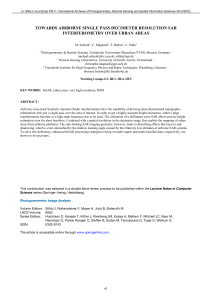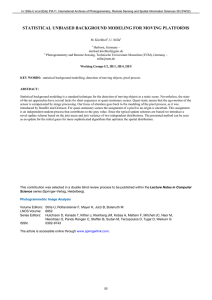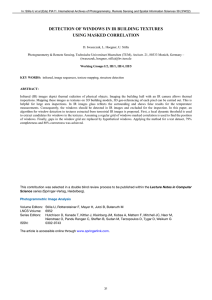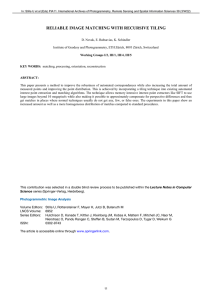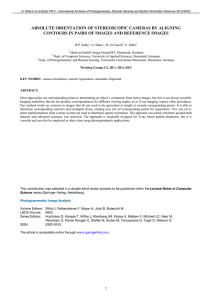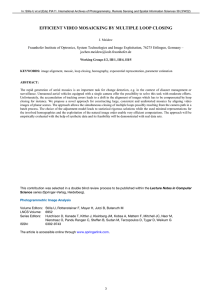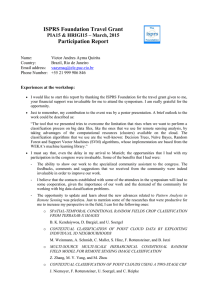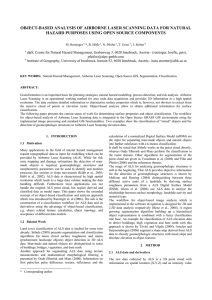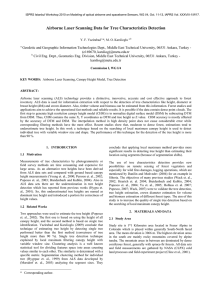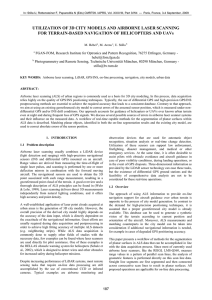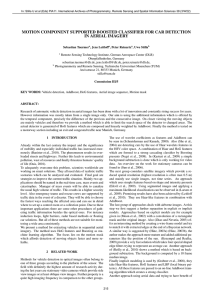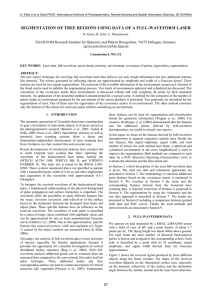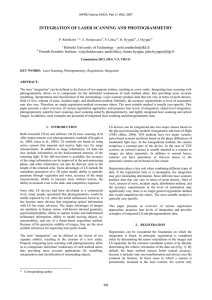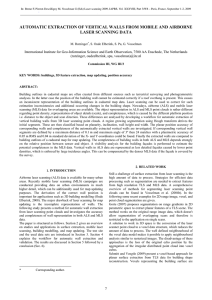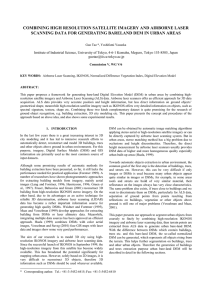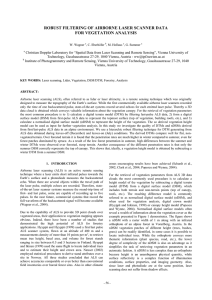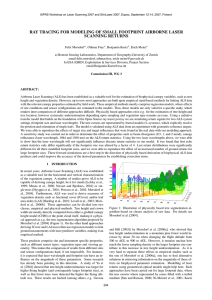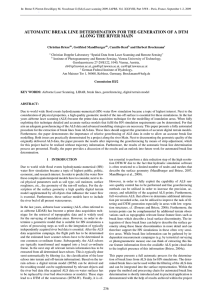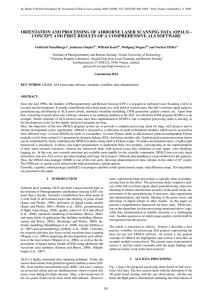Document 11841234
advertisement
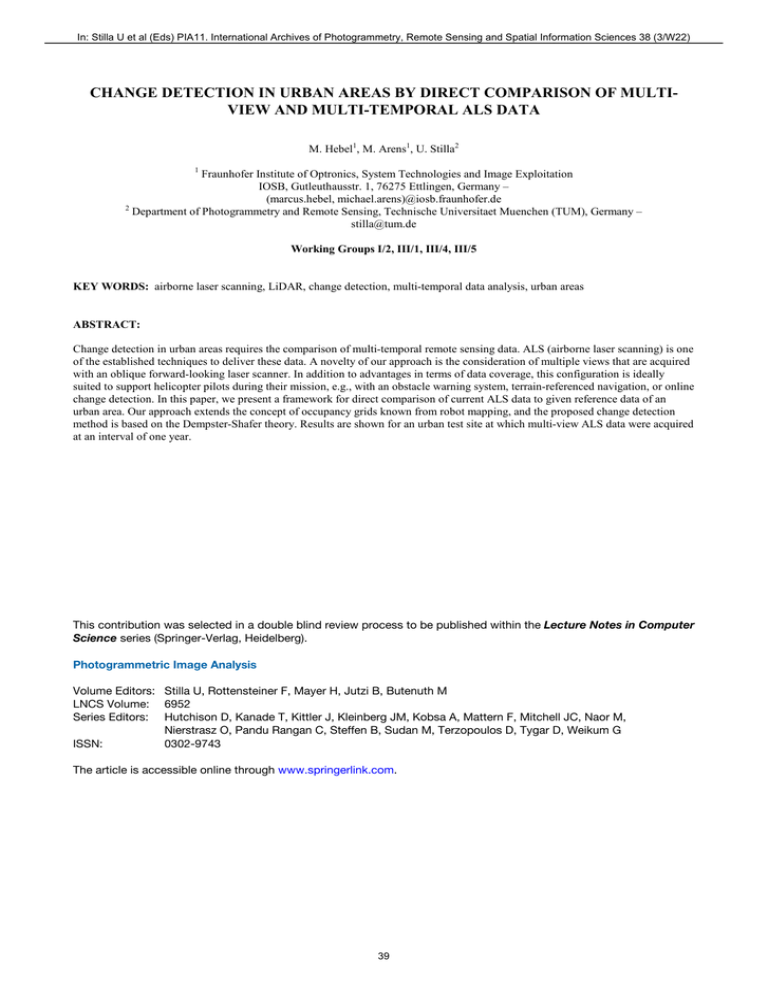
In: Stilla U et al (Eds) PIA11. International Archives of Photogrammetry, Remote Sensing and Spatial Information Sciences 38 (3/W22) CHANGE DETECTION IN URBAN AREAS BY DIRECT COMPARISON OF MULTIVIEW AND MULTI-TEMPORAL ALS DATA M. Hebel1, M. Arens1, U. Stilla2 1 Fraunhofer Institute of Optronics, System Technologies and Image Exploitation IOSB, Gutleuthausstr. 1, 76275 Ettlingen, Germany – (marcus.hebel, michael.arens)@iosb.fraunhofer.de 2 Department of Photogrammetry and Remote Sensing, Technische Universitaet Muenchen (TUM), Germany – stilla@tum.de Working Groups I/2, III/1, III/4, III/5 KEY WORDS: airborne laser scanning, LiDAR, change detection, multi-temporal data analysis, urban areas ABSTRACT: Change detection in urban areas requires the comparison of multi-temporal remote sensing data. ALS (airborne laser scanning) is one of the established techniques to deliver these data. A novelty of our approach is the consideration of multiple views that are acquired with an oblique forward-looking laser scanner. In addition to advantages in terms of data coverage, this configuration is ideally suited to support helicopter pilots during their mission, e.g., with an obstacle warning system, terrain-referenced navigation, or online change detection. In this paper, we present a framework for direct comparison of current ALS data to given reference data of an urban area. Our approach extends the concept of occupancy grids known from robot mapping, and the proposed change detection method is based on the Dempster-Shafer theory. Results are shown for an urban test site at which multi-view ALS data were acquired at an interval of one year. This contribution was selected in a double blind review process to be published within the Lecture Notes in Computer Science series (Springer-Verlag, Heidelberg). Photogrammetric Image Analysis Volume Editors: Stilla U, Rottensteiner F, Mayer H, Jutzi B, Butenuth M LNCS Volume: 6952 Series Editors: Hutchison D, Kanade T, Kittler J, Kleinberg JM, Kobsa A, Mattern F, Mitchell JC, Naor M, Nierstrasz O, Pandu Rangan C, Steffen B, Sudan M, Terzopoulos D, Tygar D, Weikum G ISSN: 0302-9743 The article is accessible online through www.springerlink.com. 39
